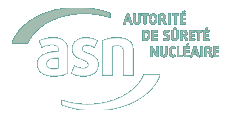| Chapter 09 |
- MEDICAL AND DENTAL RADIODIAGNOSIS INSTALLATIONS
- Presentation of the equipment inventory
- Medical radiodiagnosis
- Interventional radiology
- Dental radiodiagnosis
- Technical rules for radiology and tomography installations
- NUCLEAR MEDICINE
- Presentation of nuclear medicine activities
- In-vivo diagnosis
- In-vitro diagnosis
- Targeted internal radiotherapy
- The new nuclear medicine tracers
- Nuclear medicine unit organisation and operating rules
- EXTERNAL-BEAM RADIOTHERAPY AND BRACHYTHERAPY
- Description of the techniques
- External-beam radiotherapy
- Brachytherapy
- The new radiotherapy techniques
- Technical rules applicable to installations
- Technical rules applicable to external-beam radiotherapy installations
- Technical rules applicable to brachytherapy installations
- BLOOD PRODUCT IRRADIATORS
- Description
- Blood product irradiator statistics
- Technical rules applicable to installations
- THE STATE OF RADIATION PROTECTION IN THE MEDICAL FIELD
- Exposure situations in the medical field
- Exposure of health professionals
- Exposure of patients
- Exposure of the population and environmental impact
- Some general indicators
- Authorisations and declarations
- Dosimetry of medical staff
- Report on significant radiation protection events
- The radiation protection situation in radiotherapy
- Radiation protection of radiotherapy staff
- Radiation protection of radiotherapy patients
- Summary
- The radiation protection situation in nuclear medicine
- Radiation protection of nuclear medicine staff
- Radiation protection of nuclear medicine patients
- Protection of the population and the environment
- Summary
- The radiation protection situation in conventional radiology and computed tomography
- Radiation protection of radiology staff
- Radiation protection of radiology patients
- Summary
- The radiation protection situation in interventional radiology
- Radiation protection of interventional radiology staff
- Radiation protection of interventional radiology patients
- Summary
- OUTLOOK
|
|
With a cure rate of about 80% of patients treated (i.e. some 50% of patients suffering from cancer), radiotherapy is a fully justified method of cancer treatment, . However, given the organisational weaknesses detected by inspection in some radiotherapy centres, ASN will - with the assistance of its regional divisions - be maintaining its inspections in all radiotherapy centres at least until 2012. It will be particularly vigilant with regard to the effective increase in medical physics staffing levels, to compliance with the interim criteria published in July 2009 by the Minister for Health and to the gradual development of quality assurance, for which the first requirements are binding since the beginning of 2010.
2011 is a reference year in that the activity authorisation criteria for radiotherapy care, defined by INCa become fully applicable, especially the criterion concerning the presence of the medical physicist during treatments. In this context, ASN shall be particularly attentive to the centres in which, due to staff shortages, it will be necessary to call upon external service providers or to setup inter-centre cooperation arrangements to meet the medical physics needs. Over and beyond the difficulty of strictly complying with the formal obligation to ensure the effective presence of the medical physicist during treatments, ASN shall endeavour to verify the robustness of the medical physics organisation, particularly in the GCS's (health care cooperation groups). In this respect, ASN would not be against clarifying the regulatory criterion concerning the presence of the medical physicist during treatments, by introducing the notion of a medical physics team comprising medical physicists and dosimetry technicians.
As far as staff radiation protection is concerned, compliance with the provisions of the labour code relative to prevention of the irradiation risk after being accidentally shut in a treatment room, and the associated safety rules, is a priority short-term objective. Radiation protection inspectors shall be instructed to apply coercive measures in cases where these divergences are not remedied in 2010.
Recourse to increasingly high-performance medical imaging, particularly in computed tomography, seems justified to improve diagnostic quality and better orient therapeutic strategies. With interventional practices, imaging can also be used to guide the intervention and ensure greater precision, for the benefit of the patient.
Particular attention must nevertheless be paid to the increases in doses of ionising radiation delivered to patients. Consequently, ASN will closely monitor the national implementation of actions under the responsibility of the Minister for Health, particularly regarding the development of the numberof non-irradiating imaging techniques (MRI in particular). It will also, in cooperation with the professionals, actively support the development of decision aids to support application of the principle of justification, and the continued increasing of staffing levels in medical physics, which guarantee true application of the principle of optimisation of doses delivered to patients.
As of the beginning of 2011, ASN should state its position on the necessary improvement of radiation protection of staff and patients in interventional radiology, and especially in the operating theatres in which numerous image-guided interventions are performed. Already the question of human resources and the associated skills - particularly for the tasks ensured by PCRs and medical physicists - and the question of user training when new equipment is put into service, will be at the core of ASN recommendations.
|




